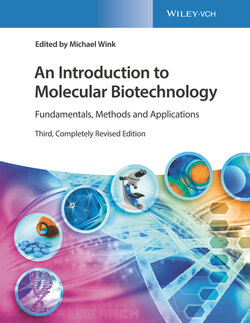Читать книгу An Introduction to Molecular Biotechnology - Группа авторов - Страница 33
3.4 Differentiation of Cells
ОглавлениеAlthough many characteristics discussed in the earlier sections apply to all cells, we must remember that there are differences between unicellular organisms and that a multicellular organism contains a variety of cells that are differentiated in many ways according to the division of labor among them. Important is the presence of totipotent stem cells from which all the other cell types derive. Stem cells are abundant in the early embryo (embryonic stem cells), but tissue‐specific stem cell exists throughout life. Also tumors are known to have tumor stem cells, which often resist the treatment by chemotherapeutics. They can be the cause for a relapse after initial tumor treatment. In plants, stem cell‐like tissues are termed “meristem” (protoderm, procambium).
Many simple organisms (bacteria but also eukaryotes such as yeast, algae, or protozoa) consist of a single cell, whereas more highly developed organisms are multicellular. The level of bacteria and unicellular eukaryotes already shows a fascinating degree of differentiation and variety of shapes that are genetically controlled.
In multicellular organisms, an increasing specialization and division of labor can be observed in the cells. Through differentiation, huge differences occur in architecture, size, and function of the cells. The differentiated cells form specific tissues and organs that communicate with each other. In humans, more than 1013 cells of 200 different types (Table 3.9) are found in various tissues and organ systems. The human genome contains about 21 000 protein‐coding genes, of which less than 30% are needed to provide the essential proteins for a cell. What makes the division of cells and tissue possible is the differential expression of the genome. During the differentiation process, further genes are activated, while the majority of genes in a cell remain switched off. The specific selection and combination of expressed genes make a wide range of functions and structures possible.
To find out which genes are active in which cell type is one of the major tasks of cell and molecular biology. A technical breakthrough was the development of DNA arrays and of RNA‐Seq by NGS (Chapter 14) to study differential gene expression. Variations during the development of an organism or as a result of environmental changes further complicate the analysis. This area is covered by functional genomics, transcriptomics, and proteomics. Developmental biologists try to find out which differentiation factors are necessary to change a totipotent stem cell (as present in the early embryonic stages) into a differentiated cell and corresponding tissues and organs. This knowledge is essential for the use of stem cells in gene therapy or tissue engineering. Table 3.9 summarizes the major types of plant and animal cells and their main functions.
